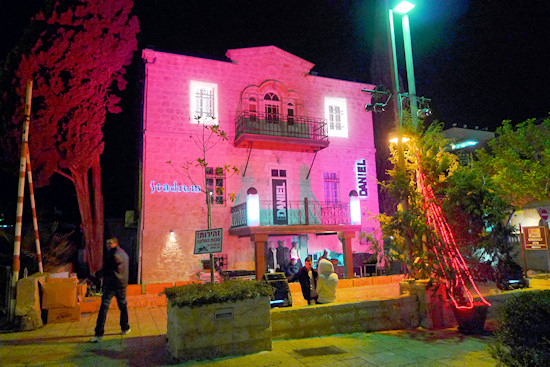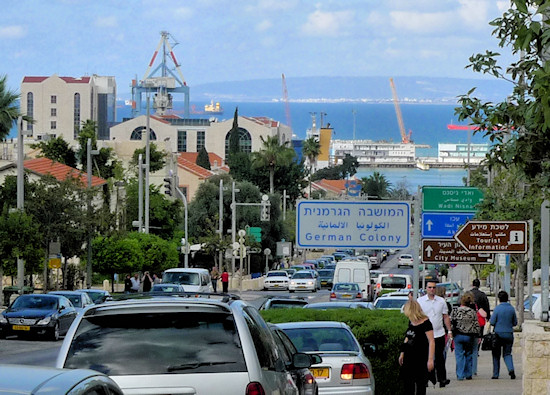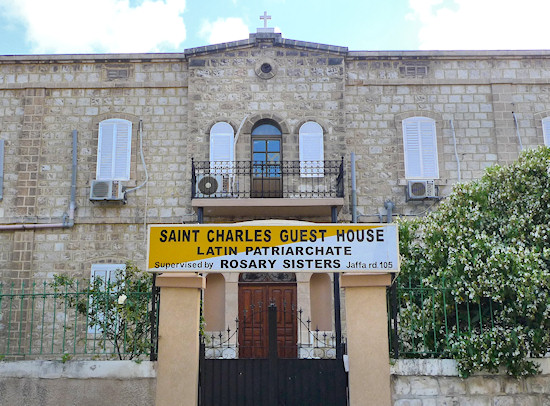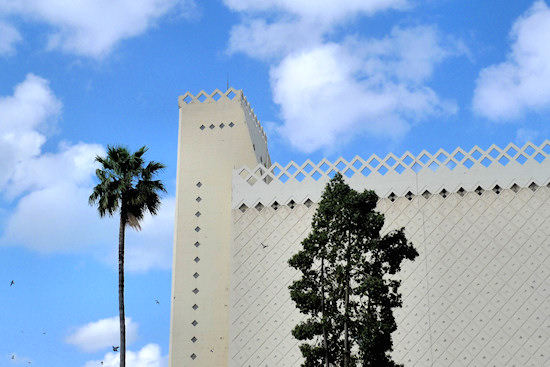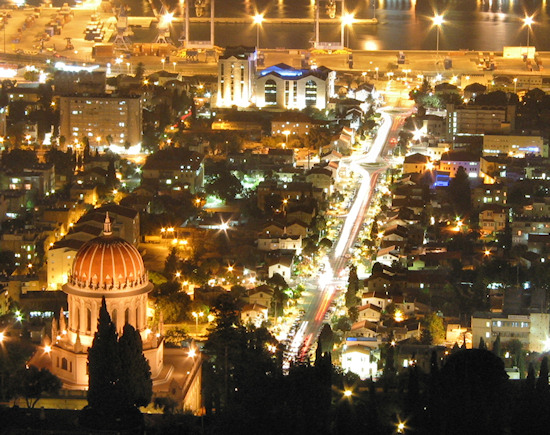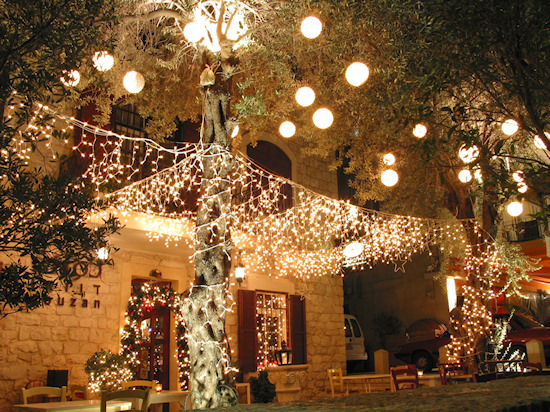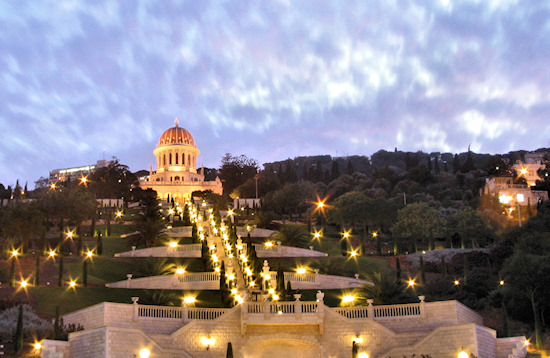Segment 21: German Colony towards Jaffa Rd. | 1.3 Km
Starting point: Corner of Hagefen St. and Ben-Gurion Blvd. UNESCO Square | 45m above sea level
Ending point: Ha’azmaut Rd. – Haifa Center HaShmona Railway Station | 5m above sea level
This section of the trail passes through the German Colony and Jaffa (Yafo) Rd. back to where the city of Haifa began and where the Haifa Trail begins and ends.
Section 21 begins at UNESCO Square at the junction of Hagefen St. and Ben-Gurion Blvd. This is the upper part of the German Colony, which extends down both sides of Ben-Gurion Blvd. The Colony was established by German Templars in 1868. The experiment was deemed a success and served as the basis for the establishment of further colonies throughout the land of Israel as a whole and on the Haifa Carmel Ridge. The Templars made a huge contribution to life of Haifa in terms of the introduction of technological innovations that improved local agricultural and transportation methods.
The Colony, which was established around the main street that descended to the sea, was designed by the architects Jacob and Gottlieb Schumacher. At the end of the street, a pier was constructed especially for the visit of the German Kaiser Wilhelm II, an important event in the history of the area. The Templars were expelled from the country by the British during the Second World War.
The Colony’s buildings are constructed of stone and have tiled roofs in the typical Templar style. Walking the length of Ben-Gurion Blvd., the buildings may be viewed at their best following their restoration, and the Colony has become one of the most charming areas of Haifa. The restoration symbolically maintains the line that separated the street from the buildings and farmyards.
Walk down Ben-Gurion Blvd; on the left, number 48 houses the Haifa Tourist Association. At the junction of Ben-Gurion Blvd. and Mordechai Anielewicz St. stands the Colony Hotel, which was once the Templar Eppinger Hotel.
Turn left into Mordechai Anielewicz St. to observe an interesting mix of styles in the stone houses. Crossing Haganim St., look right at the Neri Bloomfield School of Design and Education building, also known as Wizo Academic Center.
Continue on Mordechai Anielewicz St. and turn right into Lohamei HaGetaot St. to reach Hameginim St. On the opposite side of the street is the impressive Italian Hospital, constructed at the beginning of the 20th century. On Hameginim St., turn right back onto Ben-Gurion Blvd. At the large roundabout, turn left, taking a downward direction.
On the right at 13-15 Ben-Gurion Blvd. is the Brutalist structure of the Soldiers’ Center, an anomaly among the stone buildings. Number 11 was once the Templar community center, the first building to be constructed in the Colony and the hub of the Templars’ community life. Today, it houses the Haifa City Museum where changing exhibitions connected with the city’s history are held. Further on, at number 16 on the other side of the street, is the home of Sir Laurence Oliphant and at number 12, the home of Gottlieb Schumacher.
From Ben-Gurion Blvd, turn right in an easterly direction into Jaffa (Yafo) Rd. The buildings here are constructed in the Arab style and their facades are embellished with arched windows and balconies. Since the end of the nineteenth century, a guesthouse is situated in number 105 - the German Hospice. Turn left into the narrow Salzian St. and come out onto Ha’atzmaut Rd. Opposite is another of the buildings closely identified with the city of Haifa: the Dagon Granary. The building stores grain imported to Israel through the port. Approximately 75% of the imported grain passes through these granaries, including wheat, corn, soya, and sorghum. The granaries are owned by the Hecht family, whose name is closely associated with public institutions in Haifa due to the contributions they have made. The structure was designed by the architect Yosef Klarwein. A museum on the history and treatment of imported grain is housed in the building.
Cross Ha’atzmaut Rd. Beside the granary is the Haifa Center HaShmona Railway Station where the Haifa Trail ends, and begins...
English translation by Roberta Neiger sponsored by the social hub for community & housing, Faculty of Architecture and Town Planning, The Technion

